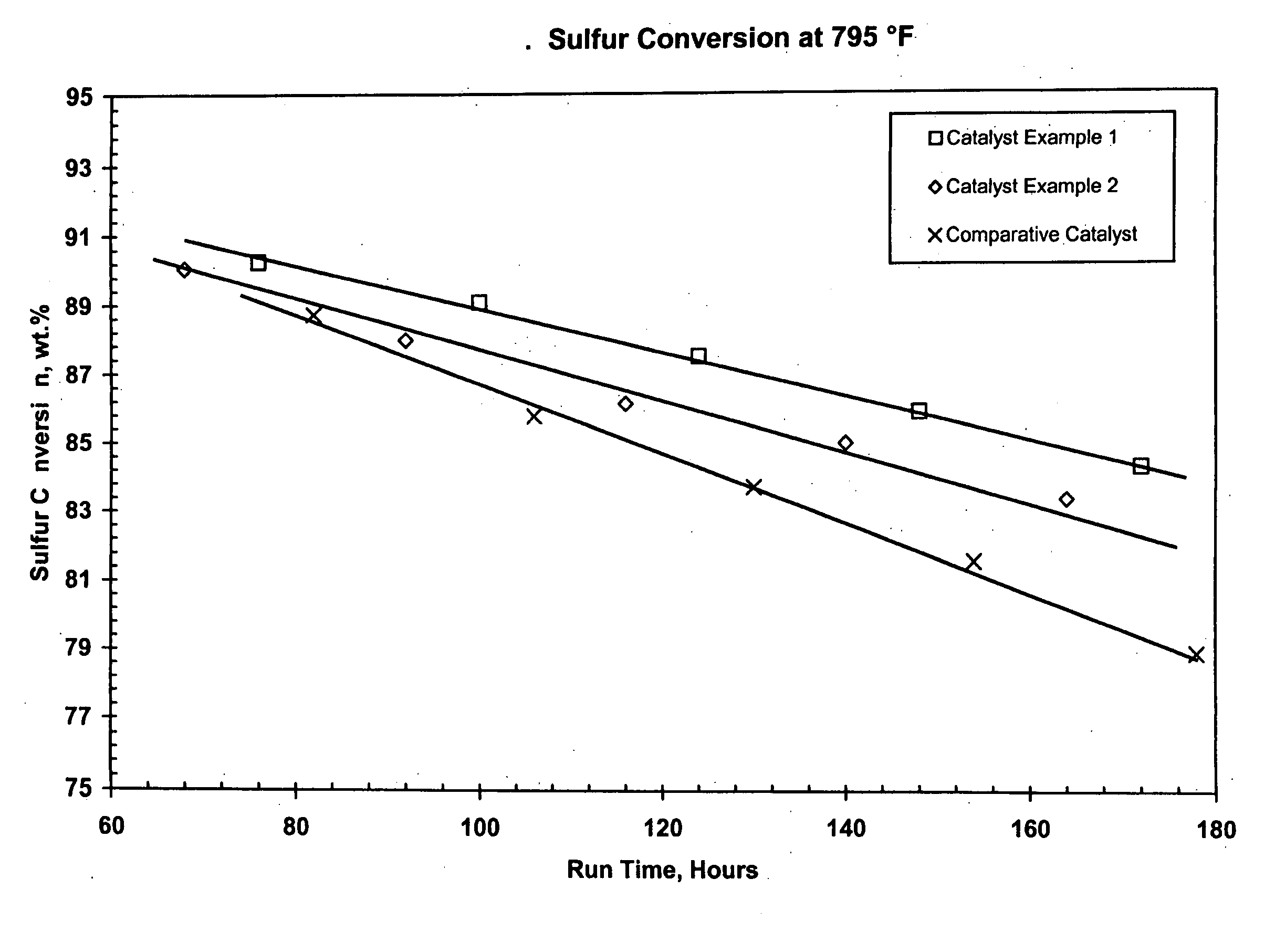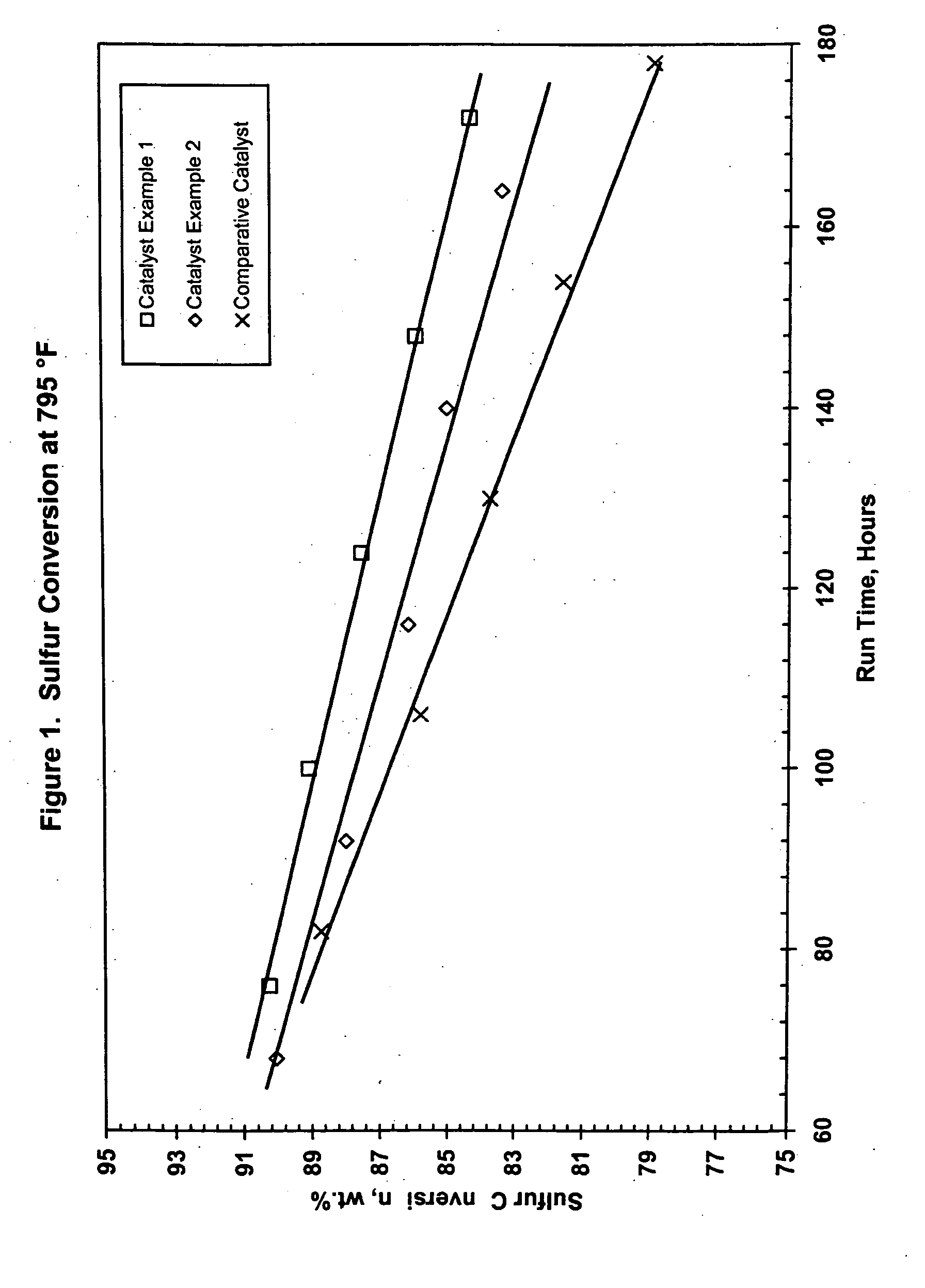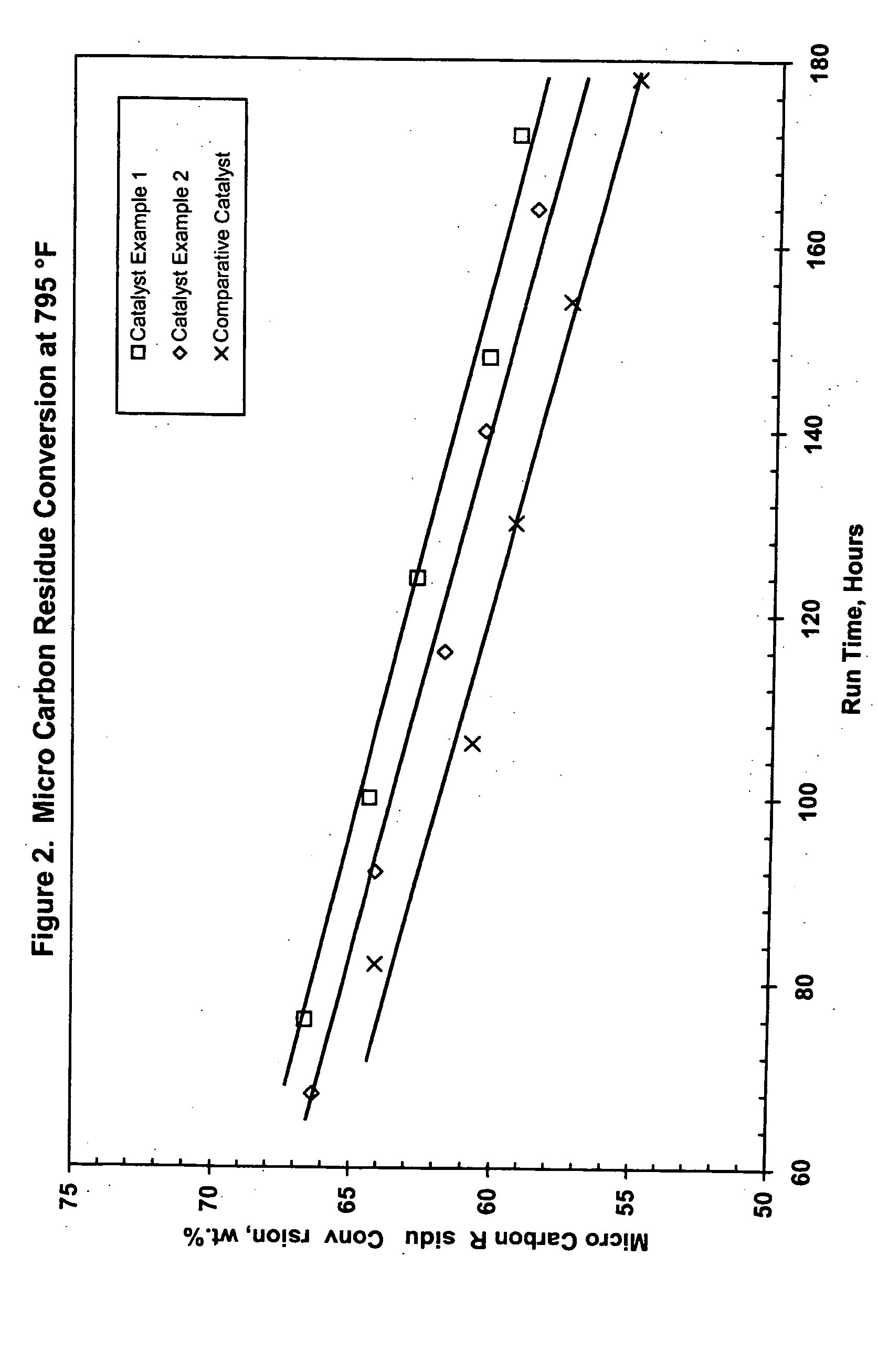Hydroconversion catalysts and methods of making and using same
a technology of conversion catalyst and catalyst, which is applied in the field of catalysts, can solve the problems of unstable solutions, low conversion rate, and high cost of catalytic metals and components containing them, and achieve the effects of improving conversion rate, high conversion rate, and increasing the level of such metals
- Summary
- Abstract
- Description
- Claims
- Application Information
AI Technical Summary
Benefits of technology
Problems solved by technology
Method used
Image
Examples
preparation examples
Stable Metals Solution and Catalyst Preparation Examples
[0107] Preparation of Impregnating Solution
[0108] Stable Metals Solution
[0109] Room temperature water (750 g) was placed in a glass kettle equipped with an overhead stirrer. Nickel carbonate (40% Ni; 116 g) was added to form a slurry. To the stirring slurry was added 75% orthophosphoric acid (52 g). The slurry was then heated to 120° F. Molybdenum trioxide (588 g) was added. After addition was complete, the temperature was raised to 190° F. and held for three hours. The solution was allowed to cool; the resulting solution corresponds to Example 1A; Subsequent dilution of Al with water to a final weight of 2280 g resulted in the solution of Example 1B. The theoretical concentration of metals for the diluted solution are 17.2% Mo, 2.0% Ni and 0.5 %P. Analysis of the solution showed 17.0% Mo, 2.2% Ni and 0.5% P.
[0110] Properties of Alumina Carrier Used to Prepare Catalysts
Alumina Properties For Catalyst Examples 1-3Compositio...
example 1
Catalyst Example 1
[0111] Uncalcined pseudoboehmite alumina powder (5200 grams) was placed into a 5-gallon Baker Perkins Sigma mixer. Stable metals solution (2562 g), prepared according to the method described above, was added with mixing. Nickel nitrate solution (15% Ni; 798 g) and water (1584 g) were also added. The resulting material was mixed for 45 minutes. The metals-containing alumina mixture was extruded through a 4″ Bonnot single auger type extruder. A die with nominal 1 mm holes was used to form the catalyst. The formed catalyst particles were dried at 250° F. for four hours then calcined at 1250° F. for one hour. The theoretical concentration of metals for this catalyst are 15.2% MoO3, 5.0% NiO and 0.7 % P2O5. Analysis of the catalyst showed 14.7% MoO3, 4.9% NiO and 0.5% P2O5.
example 2
Catalyst Example 2
[0112] Uncalcined pseudoboehmite alumina powder (5200 grams) was placed into a 5-gallon Baker Perkins Sigma mixer. Stable metals solution (2515 g), prepared according to the method described above, was added with mixing. Nickel nitrate solution (15% Ni; 458 g) and water (1785 g) were also added. The resulting material was mixed for 45 minutes. The metals-containing alumina mixture was extruded through a 4″ Bonnot single auger type extruder. A die with nominal 1 mm holes was used to form the catalyst. The formed catalyst particles were dried at 250° F. for four hours then calcined at 1250° F. for one hour. The theoretical concentration of metals for this catalyst are 15.2% MoO3, 3.6% NiO and 0.7 % P2O5. Analysis of the catalyst showed 14.7% MoO3, 3.5% NiO and 0.7% P2O5.
PUM
| Property | Measurement | Unit |
|---|---|---|
| molar ratio | aaaaa | aaaaa |
| molar ratio | aaaaa | aaaaa |
| molar ratio | aaaaa | aaaaa |
Abstract
Description
Claims
Application Information
 Login to View More
Login to View More - R&D
- Intellectual Property
- Life Sciences
- Materials
- Tech Scout
- Unparalleled Data Quality
- Higher Quality Content
- 60% Fewer Hallucinations
Browse by: Latest US Patents, China's latest patents, Technical Efficacy Thesaurus, Application Domain, Technology Topic, Popular Technical Reports.
© 2025 PatSnap. All rights reserved.Legal|Privacy policy|Modern Slavery Act Transparency Statement|Sitemap|About US| Contact US: help@patsnap.com



